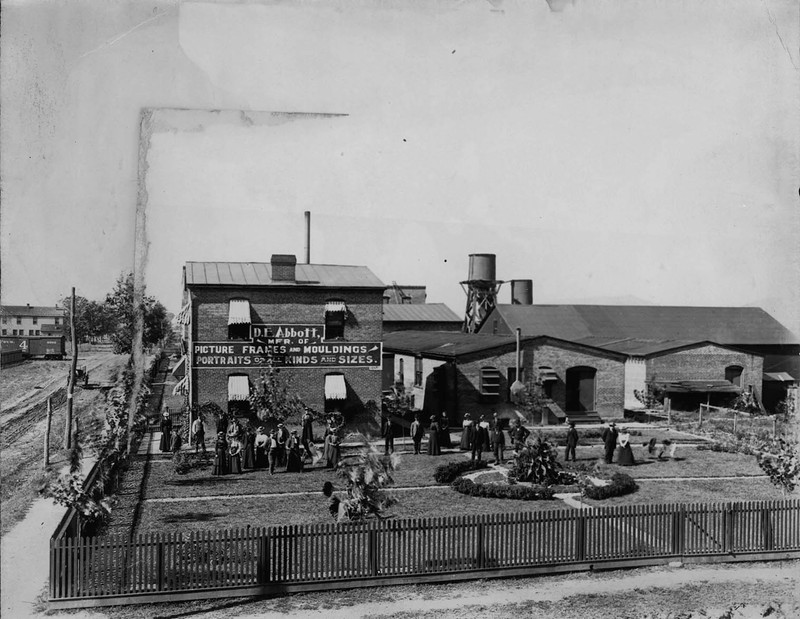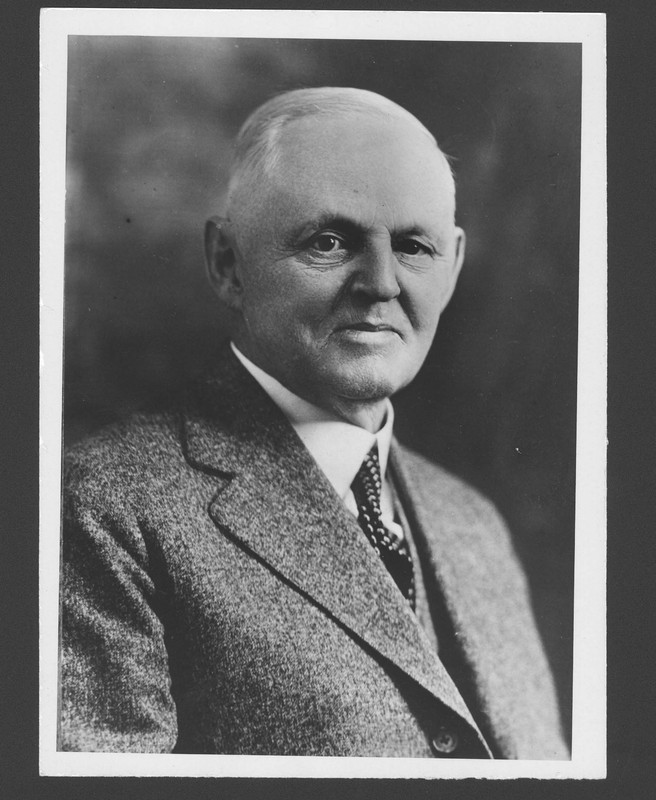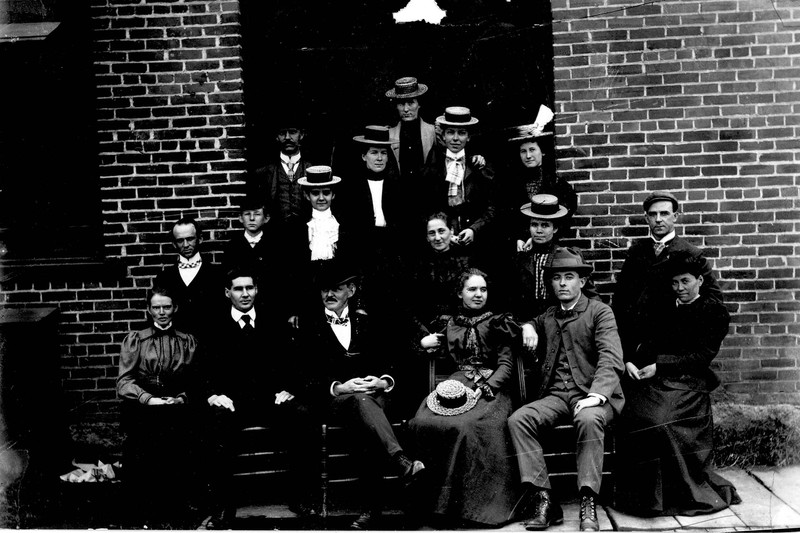D. E. Abbott & Co.
Introduction
Text-to-speech Audio
Images
D. E. Abbott & Co. around 1899. The office building on the left still stands today. Image courtesy of Marshall University Special Collections.

Darwin Eugene Abbott (1856-1942) was a successful businessman and photographer; he was also involved in many community organizations. Image courtesy of Marshall University Special Collections.

A group of workers in the early 1900s. At one point D. E. Abbott & Co. was the second-largest employer in Huntington. Image courtesy of Marshall University Special Collections.

Advertisement for D. E. Abbott & Co. from the early 1900s. Image courtesy of the West Huntington Public Library.

Backstory and Context
Text-to-speech Audio
In 1890 a man named Addison Thompson and some business partners constructed a glass plant on Washington Avenue between 14th and 15th Streets. It was one of the first industries in the new settlement of Central City. Addison Thompson and Associates operated for nearly a decade and employed around 150 people. It manufactured both blown and pressed glass pieces such as tableware. In 1898 the factory was purchased by a photographer and rising businessman named D. E. Abbott.
Darwin Eugene Abbott was born in Quebec, Canada in 1856 but grew up in Vermont. By the mid-1870s his family had migrated to Huntington. After attending Marshall College for a time, Abbott started a career as a freelance photographer, which included some work for Harper’s Magazine. Around 1880 he opened a photograph studio at the 900 block of Fourth Avenue called the Eureka Copying House. This enterprise proved successful, and it eventually grew so large that Abbott needed to expand. In 1898 he acquired the Addison Thompson and Associates factory and converted it into D. E. Abbott & Co.
Abbott’s new company provided many services such as photography, portrait enlargement, photoengraving, and copying. Its primary specialty however was the production of picture frames and moldings. Abbott’s frames became known for their exceptional quality; company salesmen sold them in over twenty states, and it was said that some frames were shipped as far away as Germany and Austria. D. E. Abbott & Co. eventually became one of the most important businesses in early Huntington. It expanded to include five buildings, and at its peak was the second-largest employer in the city, behind only the American Car and Foundry company.
While his business prospered, Abbott became absorbed in other activities. He helped create the Huntington Board of Trade, the Commercial National Bank, the Huntington Hospital Association, the Foster Foundation, and the Huntington Development and Gas Company. Additionally he was appointed the Commissioner for West Virginia for the 1904 St. Louis World’s Fair and served as president of the Huntington Chamber of Commerce, a member of the city council, and Vice President of the Cravens Green Company. In 1919 he sold most of D. E. Abbott & Co.’s equipment and infrastructure to Cravens Green. Abbott did keep operations going at his own company, albeit on a much smaller scale. Abbott died in 1942; the company survived him and remained in business until 1991.
Sometime after its closure the D. E. Abbott factory building was acquired by Jim Taylor, a local businessman and avid vintage car collector. Under his ownership the building was repurposed as an antique automobile museum called the J. Taylor Auto Collection. It contained dozens of rare and historic vehicles including an 1898 steam powered car. The museum closed around 2017 and its car collection was subsequently dispersed. As of 2019 the facility remains unoccupied.
Sources
Casto, James E. Legendary Locals of Huntington, West Virginia. Charleston, SC: Arcadia Publishing, 2016.
Casto, James E. “Lost Huntington: D. E. Abbott & Co.” Herald-Dispatch. February 20, 2017. Accessed June 12, 2019. https://www.herald-dispatch.com/special/lost_huntington/lost-huntington-d-e-abbott-co/article_78373130-bb2b-5dae-8691-4b1dcc8e9af4.html.
“Darwin Eugene Abbott.” Marshall University Special Collections. Accessed June 12, 2019. https://www.marshall.edu/special-collections/photographers/abbott.asp.
Miller, Lola Roush. Central City, WV: 1893-1909. Huntington, WV: Scaggs Printing and Office Supplies, 1993.
Miller, Lola Roush. Images of America: Central City. Charleston, SC: Arcadia Publishing, 2006.
“Museum contains more than just old cars.” Herald-Dispatch. July 17, 2011. Accessed June 12, 2019. https://www.herald-dispatch.com/news/recent_news/museum-contains-more-than-just-old-cars/article_4505bc6f-1c5b-567c-be31-8f15ab087f00.html.
